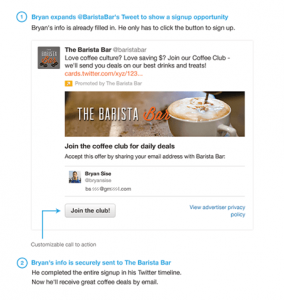All industries — especially insurance — are facing significant transformation. Customer expectations are changing rapidly, and Millennial and Generation Z consumers are not satisfied with traditional insurance processes or products. They are demanding a connected, multichannel customer experience that provides convenience, accessibility, and personalization. In a highly digital world, meeting these changing customer needs and expectations requires an evolution of mindsets, technologies, and business models.
Traditionally, B2B2C, or affinity, business models provided insurance offers and products through associations, credit unions, professional membership groups, and employer groups (think AARP and college alumni associations). However, today’s new buyers do not necessarily associate with these traditional groups and will look to buy insurance through other channels such as gig economy groups, health and fitness organizations, auto manufacturers, and much more. Buyers also expect products and services to be digitally available, adding value as part of the purchase journey.
For example, PIMA member Majesco’s consumer research on auto and life insurance finds that younger generations are open to buying insurance from a wide array of options: new channels, mobility sources, and even big tech brands (such as Amazon, Apple, and Google). Some insurers would be worried by this data, but according to Majesco Chief Strategy Officer Denise Garth, this shows that significant opportunities exist for reaching the next generation of insurance buyers.
Affinity business models, while experiencing strong growth over the past few years, should adapt and expand their view of partnerships as these new channel dynamics abolish the need to sell people on purchasing insurance. Instead, companies can introduce insurance that is ready to be bought seamlessly at the point of need, creating a scalable and sustainable business model.
Innovative Companies Focus on Meeting Customers’ Needs
“Savvy, innovative companies are responding to changing customer needs and expectations with an outside-in perspective,” says Garth. These organizations are transforming buying insurance from a mysterious, confusing, and often difficult ordeal to a more transparent, simple, and engaging experience. They use insurance innovation techniques that include new technology, data, and processes. They also understand the importance of expanding market boundaries by moving into new affinity partner programs and ecosystems that customers are interested in purchasing from.
SoFi, a fintech company, is one of the best examples. It started out as a student loan consolidation provider and has rapidly expanded to owning the entire customer financial services relationship. Its sophisticated digital platform and ecosystem enable the wealth, health, and wellness experience their clients — mostly Millennials and Gen Zers — want and need.
Given the nature of partner ecosystems, insurers can now assume multiple roles, from the owner of the unifying platform to orchestrator or partner in services and products. What insurers accomplish will depend on their capability to enter the market while it’s still relatively uncrowded. This requires leadership with an appetite for taking informed risk, the ability to move quickly, strong technology capabilities, and the capacity to build partnerships across industries.
Benefits of Strategic Business Partnerships in the Affinity Model
Garth believes that an insurance provider’s ability to expand its partner ecosystem separates the leaders from the pack. As we’ve seen with consumer expectations, market boundaries are no longer relevant. Customers seek to buy when, where, and from whom they want. New technology fuels customer expectations, altering and expanding the traditional channels through which insurance is sold. In turn, this creates greater value for insurers and brokers due to new revenue streams and access to a broader market through the multiplier effect.
Majesco and PIMA’s “Strategic Priorities” research shows that companies with affinity business models and programs are positioning themselves well ahead of companies still using traditional business models. “The companies that don’t actively engage in building a strong partner ecosystem and affinity programs will lose out on significant growth opportunities and will find fewer partnerships the longer they delay,” says Garth.
That being said, here are four ways insurance leaders can develop innovative affinity programs for their businesses:
1. Embrace a strategic multichannel approach to reach customers. The viability of the insurance industry is unquestionably connected to demographic and market trends, customer opinion, and the adoption of new technologies. If insurers lose touch with customers — both current and future — they will lose business. The end result is a porous market where engagement is key and relationships across businesses, customers, partners, and channels are crucial.
2. Create new affinity programs and business models. Insurers should proactively rethink the traditional business model and product assumptions if they want to meet broader, changing customer needs and expectations. According to Garth, new affinity programs should be flexible — able to adapt and change in real time based on customers’ demands and behaviors.
3. Innovate to gain momentum and remain relevant. Companies are competing in new paradigms beyond their brands, products, prices, and distributions. This shift requires innovative approaches and value creation by transitioning from vertical market boundaries to porous market ecosystems. By leveraging these ecosystems, companies can rapidly develop strategic partnerships that drive growth via revenue sharing, white labeling, new channel options, and more.
4. Develop core digital business platforms. Insurers must align their strategies around core system platforms, digital experience platforms, and new technologies and ecosystems that are different from on-premises “modern core” solutions of the past. These next-gen platforms should include cloud-based cores, APIs, new data sources, and ecosystems of partners that provide complementary products and services. “This creates tremendous potential for penetrating existing markets and creating brand new markets,” says Garth.
KPMG found that digitally mature organizations outperform less mature businesses. In fact, the former had 25% higher revenue growth and faster speed to market by 17 months. Digitally mature organizations not only operate more effectively, but also accurately define, unlock, and preserve value for both their customers and their business.
However, like all change, digital business transformation is successful only when company leaders believe in the need to transform — when they understand that a business focus, with an outside-in view, will put the needs of their customers at the center of their affinity program models. This is where strategic business partnerships and digital platforms make the difference.
To learn more about the benefits of creating affinity business models and partnerships, download the PIMA and Majesco whitepaper, “A Roadmap to the Future of Insurance: Program and Affinity Business.”
Business & Finance Articles on Business 2 Community
(22)
Report Post




